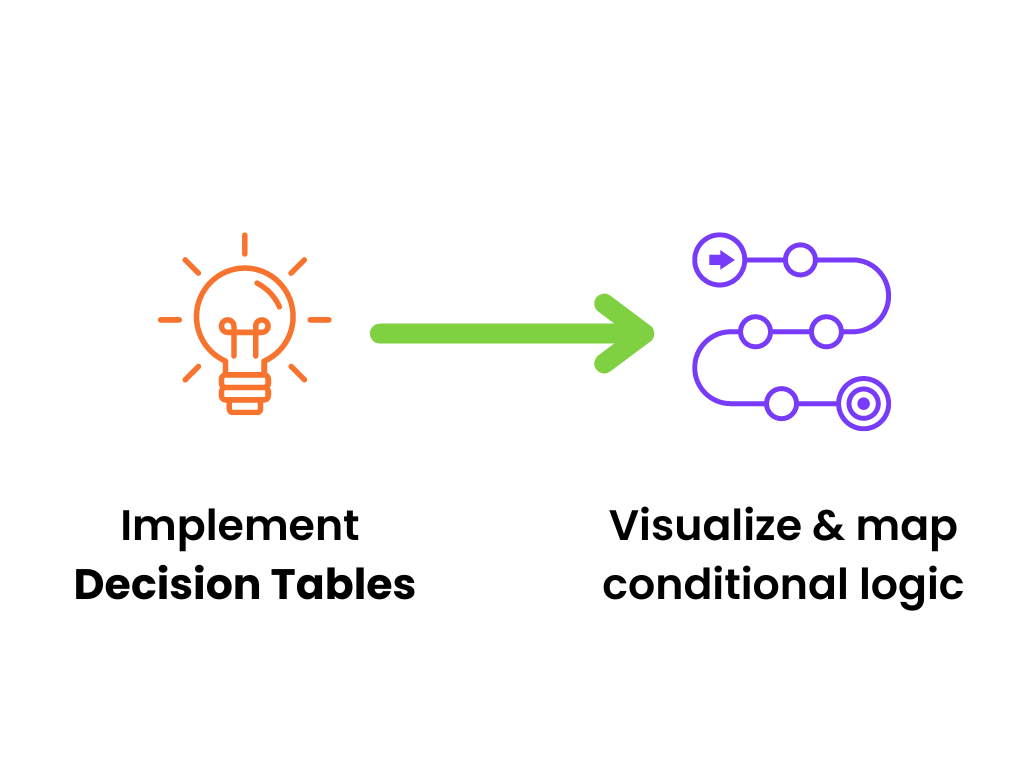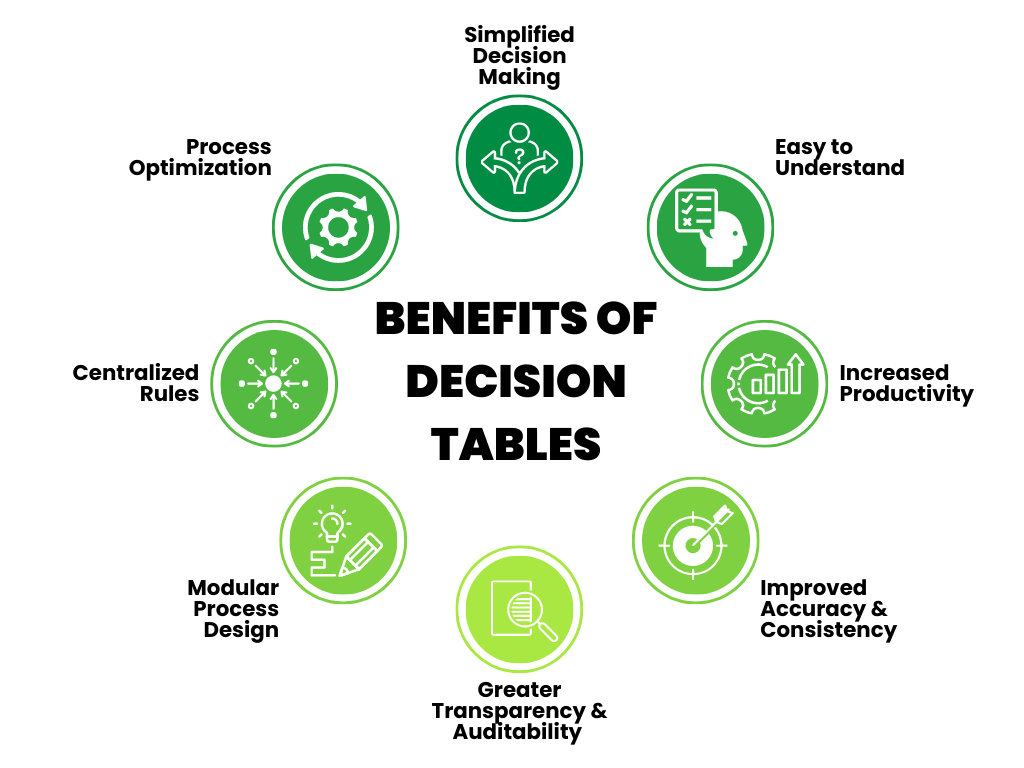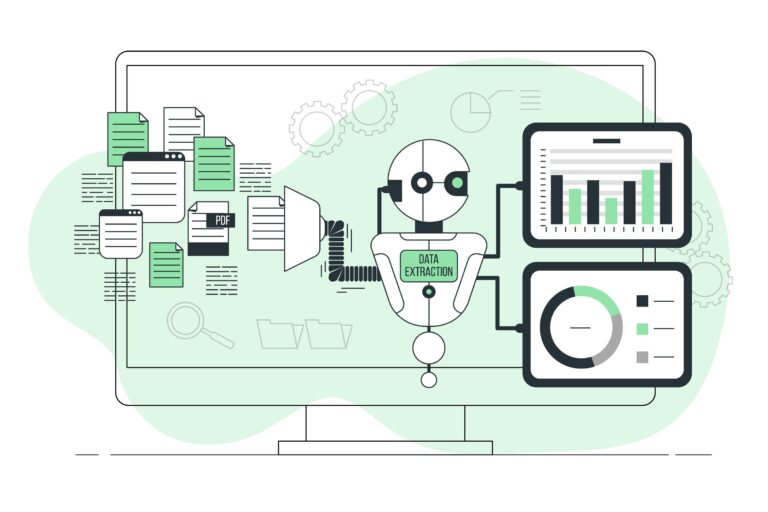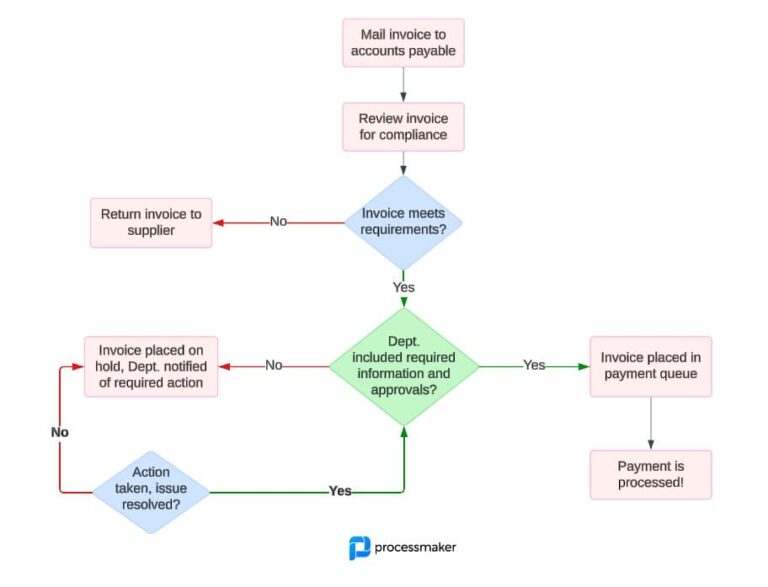Lorsque les processus atteignent un point de décision, la réponse n'est pas toujours aussi simple qu'un oui ou un non. Les processus automatisés peuvent avoir besoin d'examiner des dizaines de facteurs pour déterminer l'étape suivante : Dois-je approuver ce prêt ? Dois-je accorder cette demande de congé ? Qui dois-je contacter pour obtenir l'approbation ?
La gestion de décisions complexes et de logiques conditionnelles peut sembler insurmontable. En particulier sur les cartes de processus à plusieurs écrans ou sur les plates-formes de gestion des processus d'entreprise (BPM) qui requièrent des compétences approfondies en matière de rédaction de scripts.
Les tables de décision, une nouvelle fonctionnalité de ProcessMaker Platform, facilitent la mise en place de la logique qui permet de résoudre des règles métier complexes.
Dans cet article, nous aborderons les points suivants :
- La définition des tables de décision
- Comment les tables de décision facilitent l'élaboration des processus
- Les avantages des tables de décision
- Bonnes pratiques pour les tables de décision
Qu'est-ce qu'une table de décision dans l'automatisation des processus ?
Les tables de décision vous permettent, en tant que concepteur de processus, de visualiser et de schématiser plus facilement la logique conditionnelle. Ce sont les processus de réflexion que vos automates utilisent pour résoudre des scénarios complexes.
Imaginez ce processus de décision simple, à règle unique. Vous créez un formulaire de demande de vacances et vous souhaitez occulter une poignée de dates.
Vous pouvez définir les dates indisponibles dans une table de décision. Supposons que le 24 novembre 2023, le vendredi noir, soit une date de travail cruciale pour votre commerce de détail. Un employé soumet cette date et le système sait automatiquement qu'elle n'est pas disponible. Affichez un message de votre choix, comme "Cette date n'est pas disponible".

La prise de décision sur place permet d'améliorer toutes sortes de formulaires web sophistiqués et de tâches de traitement :
- Définir les pays qui n'acceptent pas un certain niveau d'assurance voyage ou d'assurance maladie
- Vérifier le solde d'un compte avant d'approuver un retrait
- Fixer un seuil de score de crédit pour l'approbation des prêts
- Gérer les transactions potentiellement frauduleuses
- Évaluer la qualité d'une piste de vente entrante
- Évaluer les demandes de garantie
- Déclencher des réactions appropriées en fonction des accords de niveau de service ou de l'état du programme de fidélisation
- Calculer les primes d'assurance sur la base d'un ensemble de facteurs de risque
- Approuver un bon de commande s'il est inférieur à un certain montant
- Suggérer des produits pertinents en fonction de la période de l'année
- Identifier la réponse appropriée à une demande de service à la clientèle
- Accepter/refuser une demande dans le cadre d'un processus de contrôle de la qualité
- Vérifier si une adresse électronique existe déjà dans votre système
- Déterminer quel gestionnaire doit signer en fonction du type de demande
- Cet outil rend plus conviviale la visualisation et l'adaptation des règles de gestion sans avoir à modifier votre diagramme de processus.
Comment les tables de décision facilitent-elles l'élaboration des processus ?
Les tables de décision simplifient la gestion de plusieurs options de décision dans l'automatisation des processus d'affaires (BPA) sans nécessiter de script ou de programmation complexe.
Traditionnellement, la gestion des décisions impliquait l'écriture de scripts personnalisés dans le code ou d'une toile complexe sur une carte de processus. Ils nécessitaient une expertise technique et consommaient du temps et des ressources précieuses. Avec Decision Tables, ProcessMaker a éliminé ces obstacles, aidant les utilisateurs à concevoir des décisions complexes avec facilité et efficacité.
Les principaux avantages des tables de décision
L'intégration des tables de décision dans la plate-forme ProcessMaker offre de nombreux avantages aux entreprises. Voici comment tirer le meilleur parti de cette nouvelle façon de modéliser la logique métier.

Simplification de la prise de décision
Les tables de décision offrent une approche simple et conviviale pour gérer une logique complexe. Les concepteurs de processus peuvent utiliser une interface visuelle pour définir les options de décision, les conditions et les actions, sans avoir besoin d'expertise technique ou de script.
En visualisant les relations entre les différentes possibilités, vous pouvez repérer les goulets d'étranglement et améliorer les processus. Cette simplification aide les personnes de différents services et rôles à participer à la prise de décision, à travailler ensemble et à améliorer les décisions.
Facile à comprendre
Toutes les parties prenantes, des responsables des ventes aux services informatiques, peuvent facilement comprendre les règles de décision dans un format tabulaire. Grâce aux visuels pratiques, les membres de l'équipe peuvent collaborer étroitement à l'élaboration de la logique décisionnelle. De nombreux processus affectent plusieurs équipes (ventes, marketing, comptabilité, etc.). Les tableaux de décision permettent à chacun de participer à l'élaboration des processus.
Productivité accrue
En réduisant le temps et les efforts nécessaires à la conception de décisions complexes, les tables de décision améliorent la productivité au sein des organisations. Les utilisateurs peuvent rapidement définir la logique de l'entreprise, tester différents scénarios et procéder aux ajustements nécessaires, le tout dans une interface rationalisée et intuitive. Cette efficacité permet aux équipes de prendre des décisions opportunes et éclairées, de maintenir les processus sur la bonne voie et de stimuler la productivité globale.
Amélioration de la précision et de la cohérence
Les tableaux de décision fournissent un cadre structuré pour la prise de décision, améliorant ainsi la précision et la cohérence. En ayant une vision claire de la situation, il est facile de vérifier que toutes les possibilités ont été prises en compte, ce qui réduit le risque d'erreurs ou d'oublis.
Transparence et auditabilité accrues
La représentation visuelle de la logique d'entreprise améliore la transparence. Le personnel chargé de la conformité, quelle que soit sa formation technique, peut examiner le processus de prise de décision et les facteurs qui influencent les résultats. En outre, les tables de décision sont entièrement contrôlables. Vous pouvez facilement retracer et examiner les étapes de la prise de décision, garantissant ainsi la conformité avec les réglementations et les politiques de l'organisation.
Conception modulaire des processus
En séparant les règles de décision du diagramme de processus, vous pouvez rapidement réutiliser les règles dans différents processus. La logique décisionnelle est traitée comme un composant distinct auquel vous pouvez accéder dans plusieurs contextes sans duplication.
Règles centralisées
Au lieu de disperser la logique d'entreprise dans divers processus, elle est consolidée dans un format structuré. Apporter des modifications à la table de décision elle-même sans devoir procéder à des modifications approfondies à plusieurs endroits.
Meilleures pratiques pour l'utilisation des tables de décision dans les processus automatisés
Les tables de décision sont un outil indispensable pour l'optimisation des processus. Voici quelques conseils pour tirer le meilleur parti de cette puissante nouvelle fonctionnalité.
Garder une logique concise et ciblée
Évitez la complexité inutile. Les tables de décision sont précieuses pour votre stratégie de processus car elles facilitent la visualisation et la modification d'une logique d'entreprise complexe. Le nombre de facteurs de décision, de conditions et de résultats doit rester raisonnable. Les critères ambigus, redondants ou inutiles compliquent la compréhension et la mise à jour de la table.
Les rendre compréhensibles pour les parties prenantes non techniques
Les tables de décision sont un atout pour la transparence de l'organisation. Veillez à ce qu'elles soient exemptes de jargon ou d'acronymes susceptibles de mystifier les membres de l'équipe qui ne sont pas des techniciens. Organisez des séances de partage des connaissances afin de familiariser tout le monde avec le raisonnement qui sous-tend vos processus automatisés.
Procéder à des examens réguliers
Les tables de décision à code réduit sont un élément clé de l'amélioration continue des processus. Au fur et à mesure que votre entreprise évolue, vous pourriez être en mesure de réduire le nombre de résultats possibles. Revenez fréquemment sur votre logique pour vous assurer qu'elle répond aux normes actuelles.
Lors de la révision, collaborez avec toutes les personnes concernées. Les analystes commerciaux, les experts en la matière et les représentants du service clientèle sont susceptibles de fournir un retour d'information précieux sur la manière dont les personnes naviguent dans le processus en direct. Sollicitez leur avis pour vous assurer que la logique de décision est toujours alignée sur les indicateurs clés de performance.
Les tables de décision sont une représentation numérique des politiques de votre entreprise. Grâce à cette nouvelle fonctionnalité, vous pouvez facilement définir la ligne de pensée que les automates doivent suivre pour prendre des décisions importantes. Quelle que soit votre expertise technique, vous pourrez créer des automatismes d'entreprise capables de prendre des décisions complexes avec facilité et confiance.
Comment les tables de décision favorisent-elles l'hyperproductivité ?
Les tables de décision peuvent changer la donne pour votre organisation à plus d'un titre. L'une des façons les plus significatives de transformer votre flux de travail est de stimuler l'hyperproductivité. Au lieu d'être simplement productive, votre équipe peut devenir hyperproductive, en accomplissant son travail plus rapidement et plus efficacement que jamais.
Vous pensez que les tables de décision vont transformer vos processus d'affaires ? Contactez notre équipe pour en savoir plus sur les systèmes d'automatisation des processus et sur la manière de réduire les coûts.





